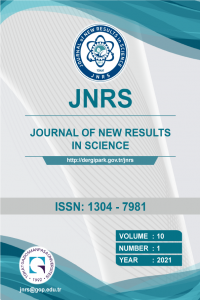Investigation of electricity produced in power plants and used for cooling buildings with a life cycle approach of carbon capture and storage technology
There are power plants that use different fuels and technologies to produce electricity that is consumed to cool the buildings in the summer period. These power plants emit Gases Harmful to the Environment and Human (GHEH) such as carbon dioxide (CO2), sulfur dioxide (SO2), nitrogen oxides (NOx) and particulate matter (PM) as a result of the combustion of the fuels they use while producing electricity. In the study, the number of emissions to be released from the power plants that produce the electricity used for the cooling of the buildings was examined. Emission reduction due to carbon capture and storage system (CCS), which is one of the new technologies that reduce the released emissions, has been investigated. The use of CCS and the emissions from its use are compared. A long-term Life cycle emission assessment has been made. The annual amount of electrical energy in the buildings was determined according to the cooling degree-day method. In the coal-burning systems of Turkey (CCS), 0.187-0.120 kg/m2 CO2, 0.00040-0.00026 kg/m2 SO2, 0.000322-0.000206 kg/m2 NOx, 0.000014-0.000009 kg/m2 PM emissions have been determined. In natural gas burning systems using CCS, 0.090-0.058 kg/m2 CO2, 0.0000018-0.000012 kg/m2 SO2, 0.000527-0.000337 kg/m2 NOx, 0.000002-0.000001 kg PM emissions were determined.
Keywords:
Power plants, electrictiy production, degree-day method gases harmful, life cycle emission asseessment,
___
- J. Eide, F. J. Sisternes, H. J. Herzoga, M. D. Webster, CO2 emission standards and investment in carbon capture. Energy Economics, 45, (2014) 53–65.
- S. Giannoulakis, K. Volkart, C. Bauer, Life cycle and cost assessment of mineral carbonation for carbon capture and storage in European power generation. International Journal of Greenhouse Gas Control, 21, (2014) 140–157.
- K. Volkart, C. Bauer, C. Boulet, Life cycle assessment of carbon capture and storage in power generation and industry in Europe. International Journal of Greenhouse Gas Control, 16, (2013) 91–106.
- B. Singh, A. H. Strømman, E. G. Hertwich, Comparative life cycle environmental assessment of CCS Technologies. International Journal of Greenhouse Gas Control, 5, (2011) 911–921.
- N. A. Odeh, T. T. Cockerill, Life cycle GHG assessment of fossil fuel power plants with carbon capture and storage. Energy Policy, 36, (2008) 367–380.
- T. T. Cruz, J. A. P. Balestieri, J. M. T. Silva, M. R. N. Vilanova, O. J. Oliveira, I. Avila, Life cycle assessment of carbon capture and storage/utilization: From current state to future research directions and opportunities. International Journal of Greenhouse Gas Control, 108, (2021) 103309.
- H. H. Cho, V. Strezov, A Comparative Review on the Environmental Impacts of Combustion-Based Electricity Generation Technologies. Energy and Fuels, 34, (2020) 10486−10502.
- B. Young, M. Krynock, D. Carlson, T. R. Hawkins, J. Marriott, B. Morelli, M. Jamieson, G. Cooney, T. J. Skoned, Comparative environmental life cycle assessment of carbon capture for petroleum refining, ammonia production, and thermoelectric power generation in the United States. International Journal of Greenhouse Gas Control, 91, (2019) 1−9.
- Ö. A. Dombaycı, Degree-days maps of Turkey for various base temperatures. Energy, 34, (2009) 1807–1812.
- F. deLlano-Paz, A. Calvo-Silvosa, S. I. Antelo, I. Soares, Power generation and pollutant emissions in the European Union: A mean-variance model. Journal of Cleaner Production, 181, (2018) 123–135.
- M. Altun, C. M. Akgul, A. Akcamete, Effect of envelope insulation on building heating energy requirement, cost and carbon footprint from a life-cycle perspective. Journal of the Faculty of Engineering and Architecture of Gazi University, 35(1), (2020) 147–163.
- C. C. S. Moore, L. Kulay, Effect of the Implementation of Carbon Capture Systems on the Environmental, Energy and Economic Performance of the Brazilian Electricity Matrix. Energies, 12(2), (2019) 1–18.
- S. Karkour, Y. Ichisugi, A. Abeynayaka, N. Itsubo, External-Cost Estimation of Electricity Generation in G20 Countries: Case Study Using a Global Life-Cycle Impact-Assessment Method. Sustainability, 12(5), (2020) 1–35.
- K. Treyer, C. Bauer, The environmental footprint of UAE's electricity sector:Combining life cycle assessment and scenario modeling. Renewable and Sustainable Energy Reviews, 55, (2016) 1234–1247.
- J. Koornneef, T. V. Keulen, A. Faaij, W. Turkenburg. Life cycle assessment of a pulverized coal power plant with post-combustion capture, transport and storage of CO2. International Journal of Greenhouse Gas Control, 2(4), (2008) 448–467.
- B. Singh, A. H. Strømman, E. G. Hertwich, Scenarios for the environmental impact of fossil fuel power: Co-benefits and trade-offs of carbon capture and storage. Energy, 45, (2012) 762–770.
- G. P. Hammond, J. Spargo, The prospects for coal-fired power plants with carbon capture and storage: A UK perspective. Energy Conversion and Management, 86, (2014) 476–489.
- L. He, Z. Lu J. Zhang, L. Geng, H. Zhao, X. Lia, Low-carbon economic dispatch for electricity and natural gas systems considering carbon capture systems and power-to-gas. Applied Energy, 224, (2018) 357–370.
- Z. Kisa, N. Pandya, R. H. E. M. Koppelaar, Electricity generation technologies: Comparison of materials use, energy return on investment, jobs creation and CO2 emissions reduction. Energy Policy, 120, (2018) 144–157.
- K. Jraida, A. Farchi, B. Mounir, I. Mounir, A study on the optimum insulation thicknesses of building walls with respect to different zones in Morocco. International Journal of Ambient Energy, 38(6), (2017) 550–555.
- TS 825, Thermal insulation requirements for buildings, Turkish Standard, 2013.
- ISSN: 1304-7981
- Yayın Aralığı: 3
- Başlangıç: 2012
- Yayıncı: TOKAT GAZİOSMANPAŞA ÜNİVERSİTESİ
